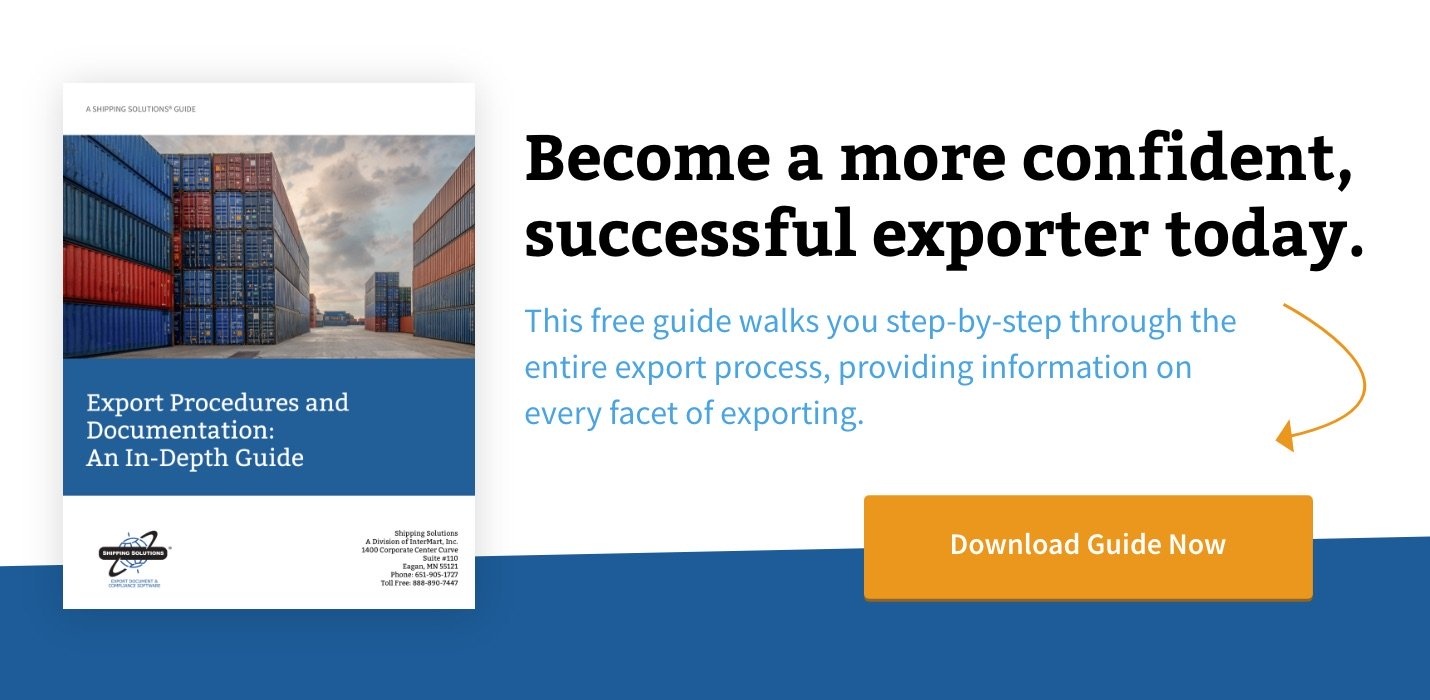The International Trade Blog International Sales & Marketing
Countertrade and International Marketing: Take a Proactive Approach!
On: December 26, 2005 | By:  Prema Nakra |
6 min. read
Prema Nakra |
6 min. read
 In setting prices for products marketed and sold internationally, a company faces a dilemma: In what currency should price be quoted?
In setting prices for products marketed and sold internationally, a company faces a dilemma: In what currency should price be quoted?
Three choices are possible: the price may be quoted in the seller's currency, the buyer's currency, or the currency of a third country.
For a number of reasons, importers and exporters both prefer that their own currency be used. There are, however, options other than currencies.
Using Countertrade in International Commerce
As markets become more global, companies are realizing that selling a widget does not necessarily bring in a currency of choice. It may bring in a case of vodka, a voucher for a Caribbean tour package, or advertising space.
Here are a few examples:
A multinational marketer in the soft drink industry such as Coca‑Cola, Pepsi or Schweppes might agree to operate a tomato factory in one country, market the host country's beer in its home country, and find a market for vodka in yet another country. In order to make a sale, the soft drink company may agree to accept fruit and vegetables, greeting cards, carpet backings, or pig skins.
Under foreign direct investment schemes, an automobile manufacturer may build an auto plant in a foreign country and agree to purchase the finished product back. They would then agree to market the product in its home country or in other countries of the world. In other instances, it may sign an agreement to purchase sheepskin, potatoes, toilet seats, cranes, coffee or any other product that the host government or the prospective buyer might wish to dispose of.
View our comprehensive resource:
Export Procedures and Documentation: A Complete Guide
An aircraft manufacturer might accept responsibility for finding markets for a variety of consumer goods produced in a host country in return for the sale of its aircraft. In order to sell its products in a particular country, a steel manufacturer might be required to take back products ranging from palm oil to coffee to timber.
These are all examples of countertrades—transactions that link, legally or otherwise, exports and imports of goods or services in addition to, or in place of, financial settlements.
New World Order
Welcome to the global economy of the 21st Century, where countertrade is being increasingly viewed by firms and nations as an excellent mechanism to gain entry into new markets. Studies by the U.S. government, United Nations ,and other independent organizations estimate that countertrade represents somewhere between 10% and 20% of all world trade.
Many countries of the world lack a fully elastic currency capable of expanding with the growth of production to meet the demands of product and service markets. The money supply in these countries is often controlled by monetary authorities targeting specific economic objects like curbing inflation, ensuring full employment, and protecting the value of its currency in foreign exchange markets. Countertrade and financing terms in these country markets are becoming as important as the quality and availability of desirable product.
Countertrade as Marketing Tool
To the uninitiated, countertrade is a generic term for parallel business transactions that link a sales contract with an agreement to purchase goods or services as a means of reducing the flow of convertible currency. For marketers suffering from marketing myopia, it is a last ditch sales strategy.
For proactive marketers, it is viewed as a respectable, almost essential global strategy tool. Countertrade is a resourceful way to arrange for the sale of a product from an exporter to a company in a country that does not have the resources to pay for it in hard currency.
The main reason that American firms engage in countertrade is to meet requirements set forth by foreign governments or customers. Countertrade, however, can be an effective and excellent mechanism to gain entry into new markets.
The party receiving the goods as a mode of full or partial payment of exported goods or services may be instrumental in opening up new international marketing channels and ultimately expanding the market for mutual benefit of both exporter and importer. Yet, countertrade remains essentially a reactionary trade practice for many companies.
Forms of Countertrade
All countertrade transactions explicitly link import and export transactions between two traders, but they can differ from each other in terms of whether they involve foreign exchange in the transaction, whether the two trade flows are temporarily separated, and where the trade flows stand in technical relation to each other.
The The Global Offset and Countertrade Association (GOCA) identifies five categories of countertrade based on the degree of complexity of the trading arrangement. These include:
- Barter/swap,
- Counter purchase,
- Compensation/buy‑back,
- Clearing arrangements/switch trading, and
- Offsets.
Counter-purchase is the most frequently used form of countertrade, followed by offsets, buy-back/compensation, barter/swaps, and switch trading.
Download the free white paper—
Evaluating Export Markets:
How to Evaluate Country and Customer Risk
During the 1980s, countertrade transactions were mainly a vehicle for financing trade turnovers with developing countries. In the 1990s, the practice emerged as a vehicle for financing capital projects and production-sharing ventures for repatriation of profits. Increasingly, multinationals are being forced to pursue countertrade as an alternative mode of payment for products and services exported or marketed.
Companies that utilize countertrade enjoy increased sales and increased utilization of plant capacity. Purchasing benefits include a means of supply assurance and the development of world knowledge in the purchasing function.
Challenges of Countertrade
One of the unique challenges of countertrade transactions is that companies often find themselves handling products with which they are not familiar. In addition, they may receive products that vary in quality from shipment to shipment.
Since many countertrade transactions are longer-term contracts, the price of a countertrade product may vary substantially on the world market over the term of the contract. If a company has a fixed price for a product in a countertrade, they may end up with substantial losses or an inability to sell the product.
Marketers accepting goods in countertrade must also be concerned with many of the following issues:
- Quality and consistency of products accepted as part of the agreement, and unavailability of preferred items offered on a compensation account shopping list.
- Determining the value and potential demand for the goods offered in countertrade.
- Unavailability of a ready market for goods bartered.
- Extended and complex negotiation processes and increased transaction costs.
- Lack of time to conduct a market analysis; it is not unusual to have sales negotiations almost completed before countertrade is introduced as a requirement for the transaction.
- Added overall complexity and time commitment due to the risks associated with the political, legal, cultural and economic environment in the importing country.
Developing a Proactive Strategy
It is important that global marketers develop appropriate market entry and countertrade strategies to take advantage of new opportunities. These strategies involve decisions in areas including, but not limited to: which markets to enter, which products to accept, and when to walk away from a countertrade offer.
Exporters generally have three options for disposing of countertraded goods: They may (1) use the products in‑house as part of their own production process, (2) use in-house marketing resources to find a market for the goods, or (3) hire intermediaries/barter houses to find markets for the countertraded goods.
Retaining a reliable trading company or barter house familiar with either the country or the product reduces strategic risks involved in counter-trade agreements. Large commodity traders, barter houses, export trading companies, banks, and independent agents are well trained and experienced in arranging countertrade transactions for global marketers.
Useful websites include:
Final Words
Global marketers must include in their market pricing toolkit some appreciation and understanding of countertrade. Companies that decline to participate run the risk of losing market share worldwide to more accommodating competitors.
In the final analysis, currency convertibility will not diminish the growth of countertrade since convertibility does not necessarily mean the availability of the hard currencies. Country advantages, bank credit crunch, growing demand for consumer goods, and convertibility will push the demand for countertrade to new heights.
This article was first published in December 2005 and has been updated to include current information, links and formatting.

About the Author: Prema Nakra
Prema Nakra, Ph.D. is an educator, economist and a marketing consultant. Dr. Nakra is a professor of marketingand International Business and MBA Program Director at the School of Management, Marist College. Her academic qualifications include a Ph.D. in economics, MA in economics, and MBA in marketing management.
Prior to joining Marist, Dr. Nakra worked for international organizations including the International Cooperative Alliance for South East Asia, Ellington Duval Inc, Worldwide Marketing Group, and the New School for Social Research. An active member of American Marketing Association, American Economic Association, and Balanced Scorecard Technology Council, she is frequently invited to presents papers and at international business conferences.


